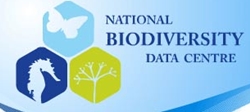
New report published by National Biodiversity Data Centre finds the rate of invasion of alien species to Ireland is increasing. Invasion of alien species to Ireland is on the increase with nearly four times more seen in the wild in the last century than the previous one. Help is needed to combat their threat to our biodiversity, economy and health.
- 13% of the alien species are listed as invasive species which have a negative impact on our economy and biodiversity
- The estimated annual cost of alien species to Ireland is €261 million
- 31 identification sheets have been produced to help people identify some of the invasive species already in Ireland and others that might soon arrive
- This is a call to everyone to help prevent their introduction to Ireland and the wild and to report sightings of them.
“We all have our part to play in protecting Ireland’s biodiversity and economy” says Colette O’Flynn. She continues, “with the worrying increasing trend in invasions we must carefully consider the types of plants and animals we are bringing into the country and be sure that we do not allow the invasive species to enter into the wild”. To aid with identifying and reporting sightings of these invasive species, the National Biodiversity Data Centre has produced 31 identification sheets and supported development of the Invasives Ireland phone app by Longford County Council. Interestingly, half of the 12 invasive species recorded between 2001 and 2010 were first seen and reported by members of the public. These included reports of Siberian chipmunk, Chinese mitten-crab and Harlequin ladybird.
The report Ireland’s invasive and non-native species – trends in introductions published today by the National Biodiversity Data Centre [Thursday, February 6th, 2014] reveals their increase in introductions to our shores and looks at new invader species which could arrive in the future. To date, the majority of invasive species in Ireland are plants, but the future trend may be towards invertebrate and vertebrate species comprising a greater percentage of all new arrivals. Species such as Killer shrimp, Raccoon dog or the moth.
Colette O’Flynn, one of the report’s authors notes that ‘the percentage of invasive species in Ireland is comparable to other European countries as is the dramatic recent increase in introductions which is linked to increased movement of people and goods throughout the world’. Colette O’Flynn urges the “need for analysis to identify where the species are being introduced from and how they are getting here as they may be introduced through intentional trade or unintentional ‘hitchhiking’. Knowing this can help us see how best to prevent these species invading Ireland”.
The report also highlights that while the majority of species are found in the terrestrial environment the rate of increase in introductions is increasing for all environments with the greatest increase for the freshwater environment since 1980. The freshwater environment is also the only environment where analysis indicates that freshwater non-native species are more likely to be high impact invaders where they are introduced.
The identification sheets can be downloaded from the National Invasive Species Database website.
Ireland’s Invasive and Non-native Species – trends in introductions report.





